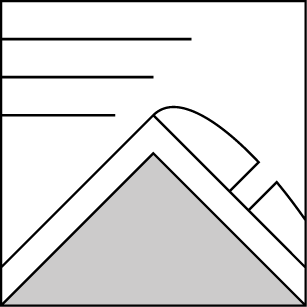Basic Information
Observation Details
Observation Date:
December 19, 2021Submitted:
December 20, 2021Observer:
SAC - VandenBosZone or Region:
Banner SummitLocation:
Beaver Creek (6,500-8,000', primarily NE-N-NW)Signs of Unstable Snow
Recent Avalanches?
None ObservedCracking?
IsolatedCollapsing?
None ExperiencedSnow Stability
Stability Rating:
FairConfidence in Rating:
ModerateStability Trend:
WorseningBottom Line
The weak layer buried near the base of the snowpack is showing little signs of healing. It is armored by a thick slab, making impacting the layer more difficult to but allowing for larger and more destructive slides if you do.
Media/Attachments
Advanced Information
Weather Summary
Cloud Cover:
ObscuredWind:
Moderate , WNew/Recent Snowfall:
20cm at highway level by 1800Continually snowing S1 to S3 throughout my time in the field, from ~1200-600. Steady winds were blowing at good loading speeds out of the W, even down into the upper reaches of middle elevation where the terrain was more exposed.
Avalanche Observations
Visibility was terrible (unfortunately) and I was unable to look for recent avalanche activity. A separate party reported somewhat recent debris below a north-facing slope at 8,000'. With a continued trickle of snow in this area since the big storm it is tough to say
Snowpack Observations
My primary objective for the day was to see how 12/11 is behaving on cold aspects away from Copper. The 20cm of new snow that fell during the day added to what is now a 100-110cm thick slab overlying 12/11. This slab is F- at the base and grades pretty smoothly down to 1F+ at the base of the slab. The bottom 30cm are 1F+. I dug on a NE-aspect at 7,900' where slope angle was 27 degrees. I received repeated unstable snowpack test scores in all tests that I performed. ECTP 22 and 30, PST 27/100 END, 33/120 END, CPST 22/120 END, CPST 28/120 END. Getting ECTs to propagate with standard loading steps on a weak layer that is 1+m down is never a good sign. It's worth remembering that this weak layer has only been buried for roughly one week at this point and that snow does not appreciate rapid change. We are not over the hump on this one yet in the Banner area.
The 12/11 weak layer here appeared very similar to that I've seen elsewhere on NE-N at middle and upper elevations: a few sets of subtle, now-decomposing crusts formed by warm ambient temperatures interspersed by well-developed facets. The upper interval of facets is the worst in appearance and was the one that failed in stability tests. Here, grains are 3-4mm, cupped and striated, with a few chains to be found.
Its easy to become laser-focused when we have such an obvious, productive weak layer, but can't take our eye off the ball and forget about surficial goings on. Today's weather (sustained winds and constant snowfall) is a recipe for wind slab problems. In this area we don't have good observations on the nature of the surface that was buried by the storm today (12/19). South of Galena Pass it is presenting primarily as a radiation recrystallization crust. In the Banner area, passing clouds may have prevented these crusts from forming, or made their distribution more spotty. I did not find this crusts and could not detect it when riding my sled.


Avalanche Problems
| Problem | Location | Distribution | Sensitivity | Size | Comments |
|---|---|---|---|---|---|
 Persistent Slab
Persistent Slab
|
|
Weak Layer(s):
Dec 11, 2021 (FC)
Comments: Rose shaded based on where problem is suspected to exist. |
|||
 Wind Slab
Wind Slab
|
|
Unknown |
Comments: Formed from snow that fell 12/19/21, small slabs I encountered on test slopes produced cracks extending 3-4m. I did not observe any wind slab avalanches (terrible visibility) but I'd bet you could have gone out and made some today. |
Terrain Use
Continuing to avoid avalanche terrain and terrain exposed to hazard from above on shaded aspects.

